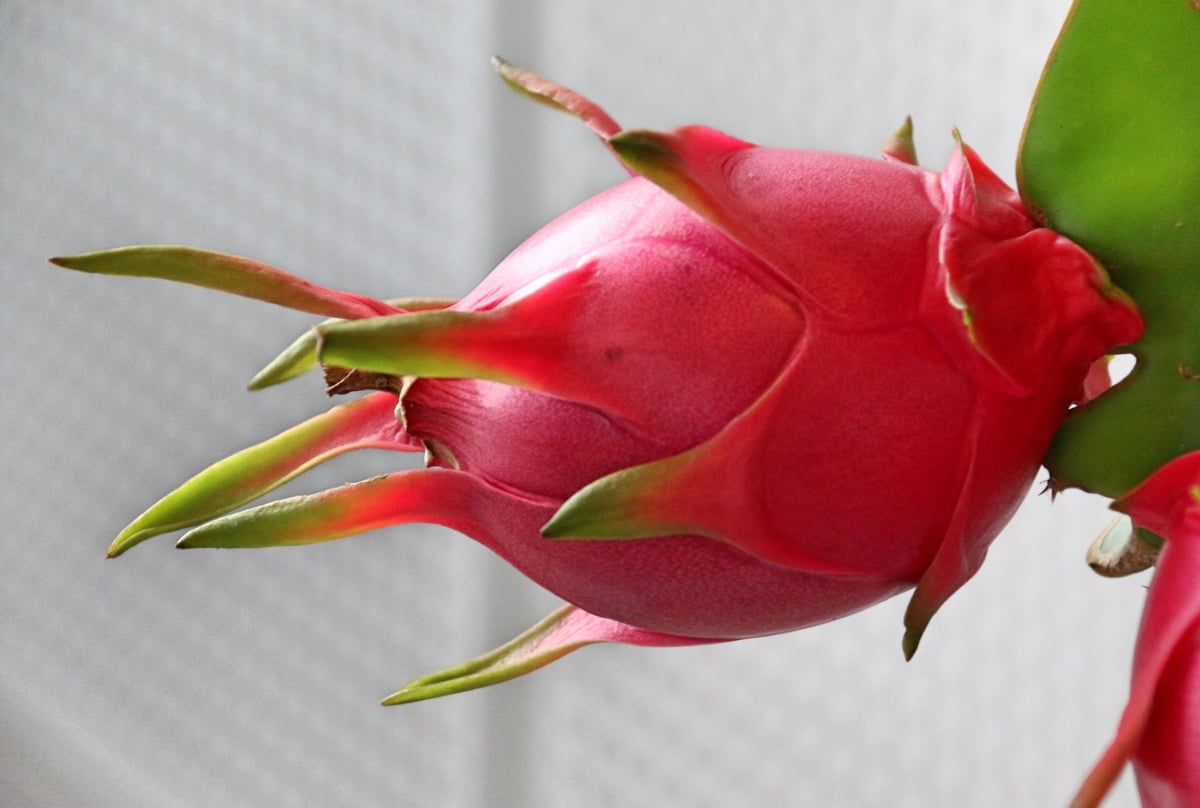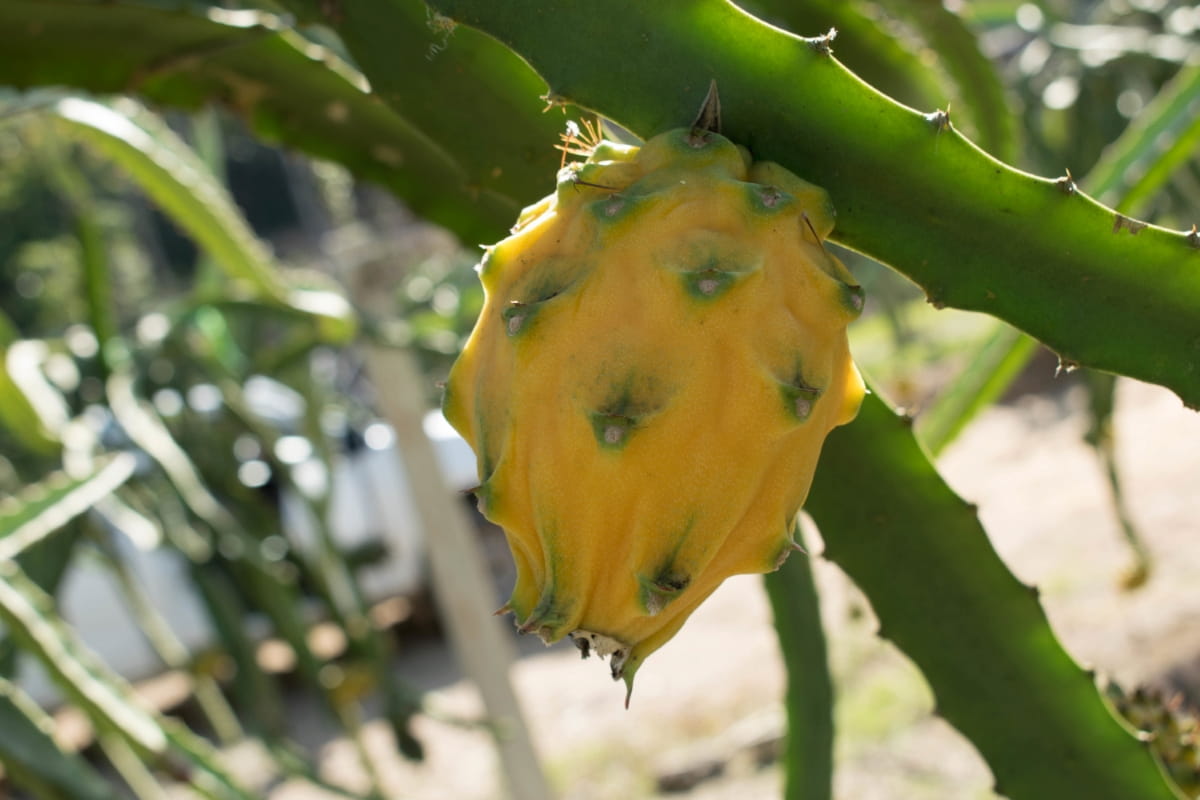Dragon fruits are tropical fruit native to South and Central America, with a unique and sweet flavor. Many people grow dragon fruit trees in home gardens, but keeping them healthy and thriving can be challenging. There are several causes of dying dragon fruit trees and some ways to fix them.

9 Causes of Dying Dragon Fruit Trees
Why is My Dragon Fruit Tree Dying in Summer Heat, and What Can I Do to Save It?
Your Dragon fruit can grow better in summers and do better in warm temperatures 32℃, but you should protect it from temperature extremes during hot climates. However, during winter, it is better to keep your plant dry. Dragon fruit does well in temperate climates having temperatures between 25-32℃. However, some gardeners can expose their Dragon fruit to extreme temperatures causing stress in their plants.
While high temperatures ranging between 32-35℃ can help maintain the deep colors of Dragon fruit, you must be careful when trying out such an experiment. During the hot summer, extremely high temperatures can burn your Dragon fruit, damaging its stem and root system. During summer’s daytime (when the temperature is extremely high), consider relocating your plant to a shaded place or protect them with a shade cloth.
Preventing Dragon Fruit Tree Death from Fungal Infections: Effective Remedies and Prevention Tips
Stem rot and stem and fruit canker in dragon fruit trees are two diseases that can cause significant damage to the tree. Stem rot is caused by the fungus Phytophthora parasitica and can cause the bark of the stem to become discolored and weakened. Stem and fruit canker is caused by the fungus Botryosphaeria rhodina and can cause lesions on the stem and fruit.
The best way to stop spreading these diseases is to practice good sanitation and remove any affected plant parts. Additionally, using a fungicide specifically designed to control stem rot and stem and fruit canker can help keep the tree healthy. Proper irrigation and avoiding overwatering can also help to reduce the risk of stem rot and stem and fruit canker. Lastly, planting resistant varieties of dragon fruit can also reduce the risk of these diseases.
Identifying Nutrient Deficiencies in Dragon Fruit Trees and Remedies to Revive Them
There are many nutrients that dragon fruit plants require to survive. They can’t thrive without a healthy diet of nitrogen, magnesium, iron, and manganese. In addition, they need to have enough phosphorus, potassium, and sulfur in their soil. Dragon Fruit plants can also suffer from nutrient deficiencies which might lead to stunted growth.
The lack of these nutrients may result in fruit, not of the right weight, shape, and quality. Boosting fruit growth and firmness can be achieved by adding calcium and micronutrients. Dragon Fruit should also be fertilized with this low nitrogen fertilizer mixture called Super bloom, which has a composition of 0-10-10 or 2-10-10.
How to Protect Dragon Fruit Trees from Pests and Diseases to Prevent Decline and Death
Scales, aphids, mealybugs, thrips, and mites attack these trees. First, monitor your plant for pests and damage to protect your dragon fruit tree. Remove aphids, mites, and ants with a forceful water spray from the garden hose. Pick off beetle grubs if you see them. Trim off dragon fruit stems infested with thrips or scale insects to prevent the further spread of the pests.
Spray the pruning tool blades with household disinfectant and then rinse them to prevent the spreading of disease or pests. Rust spots on Dragon Fruits are actually the fungal disease Botryosphaeria or brown stem spot disease. It is a non-aggressive disease that can cause small brown spots on the plant. The cause is often stress.
The plant may have suffered some injuries, where the rust spots subsequently develop. To control this, you need to ensure that the soil isn’t too moist and airy. The dragon fruit doesn’t like wet feet. A drug called copper sulfide prevents rust from spreading. This is not a biological method, and you should be cautious not to let it get into the ground, as it affects the soil’s microbiology.
Overwatering Issues in Dragon Fruit Trees: Signs, Symptoms, and Steps to Rescue a Dying Tree
The roots of dragon fruit do not like to be soaked in water. Root rot will be caused by overwatering or excessive rainfall. A dragon fruit tree should be watered every two weeks. Under normal circumstances, this is the case. We can also expect some rain each week, even during the summer.
In case you missed it: The Rise of Dragon Fruit Contract Farming in India: A Game-Changer for Farmers

Water the tree once a week in that case. You can feel the soil as dry or slightly damp. However, it should never be as hard as rock or swampy. You can check the soil moisture level using a moisture meter (tensiometer) or your finger. A spot with a lot of rain should carefully evaluate its drainage system.
Underwatering Issues in Dragon Fruit Trees: Signs, Symptoms, and Steps to Rescue a Dying Tree
Succulent plants like Dragon Fruit trees don’t require frequent watering, but sufficient soil moisture is necessary for good growth and yields. As a general rule, pitahayas require similar amounts of water to papayas. Several farmers use the practice of leaving their plants unwatered just before flowering to boost flower production.
The application of fertilizer and the development of flowers and fruits require irrigation. It is recommended that newly planted dragon fruit be allowed to dry before irrigation to avoid rot. In potted plants, water slowly, wait for the water to drain out the bottom, then pour off the excess water to avoid accumulation — excess soil drying and less frequent irrigation result in abnormally high fruit splitting.
Dragon Fruit Tree Winter Damage/dying: Protecting Trees from Frost and Cold Temperatures
Dragon fruit is a cactus; temperatures below 0°C will damage it. The plant can bounce back from light injury, but a severe, prolonged freeze could kill it. Dragon fruit plants grown outdoors benefit from mulch, which acts as an insulator, preventing extreme temperature changes. Keep the mulch 8 to 10 inches from the base of the plant by laying down a 2-3-inch layer of bark or wood chips. The roots will be protected from frost if this is done.
The frequency of watering your tree should be reduced to weekly once or every ten days in winter. Dragon fruit will die if watered too much during winter, so allow it to dry between waterings. Water only when the temperature is above freezing. Build a dragon fruit shelter if the weather forecast predicts several frost days. Stakes can be covered with burlap for a quick solution.
Improper Pruning May Cause Dragon Fruit Tree Death: Pruning Methods for Healthy Growth
Dragon fruit does not require much pruning. Remove withered flowers and branches so the plant uses nutrients for healthy growth. Cut off the stems at the thin connecting joints using sharp, clean clippers. Before you start cutting, examine the entire plant and strategize which stems must go.
The first to go should be diseased or dying pieces. Next, trim back or remove stems growing out of control or in the wrong direction. You can also search for parts that don’t get much sunlight and are just eating up energy without providing in return. Removing these will redirect energy flow into new growth and flowering.
Reviving a Stressed Dragon Fruit Tree: Rehabilitation Methods for Overall Recovery
One must first assess the damage to revive a dead dragon fruit tree. If the tree is completely dead, it must be replaced. If the tree is only partially dead, then it can be revived by pruning away the dead parts and fertilizing the soil. Once the tree is assessed, the appropriate action can be taken to revive it.
In case you missed it: Frequently Asked Questions About Dragon/Pitaya Fruit Farming

Your dragon fruit trees die primarily due to poor water management, environmental stress, and lack of nutrients. To save a dying dragon fruit plant, you should give it the proper care and attention it needs. This includes watering it regularly, keeping it warm and sunny, and fertilizing it. If the plant is not improving, you may need to replant it in fresh soil.
Conclusion
In conclusion, there are several causes of dying dragon fruit trees, including insufficient water, lack of nutrients, lack of sunlight, and pests. To keep dragon fruit trees healthy, it is important to ensure they are watered deeply once a week, fertilized every few months, planted in an area with enough sun, and regularly checked for pests. With the right care, dragon fruit trees can live for many years.
- Feed Your Flock for Less: Top 10 Tips to Save on Chicken Feed
- Ultimate Guide to Ossabaw Island Hog: Breeding, Raising, Diet, and Care
- Hatching Answers: The Top 10 Reasons Your Chickens Aren’t Laying Eggs
- Eggs and Economics: Breaking Down the Cost of Raising Backyard Chickens
- Defend Your Greens: Proven Methods to Keep Iguanas Out of Your Garden
- Ultimate Guide to Cinnamon Queen Chicken: A Comprehensive Guide for Beginners
- Ultimate Guide to California Tan Chicken: Breeding, Raising, Diet, Egg-Production and Care
- Ultimate Guide to Marsh Daisy Chicken: Breeding, Raising, Diet, and Care
- 10 Types of Chicken Farming Businesses You Can Start for Profits